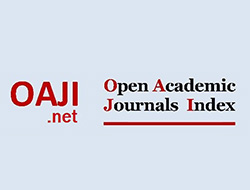Considerations on the dualistic construction of reality in Raul Germano Brandão's Húmus
Keywords:
Húmus, Literary Analysis, Psychoanalytic ReadingAbstract
This article intends to reflect about some aspects of the role played by the characters residing in the Vila – a central place and non-place of Húmus – brandoniana.
Furthermore, and more specifically, the article also intends to focus on the relationship between the story’s narrator and the character Gabiru, this in order to open up interpretative possibilities about the functioning and structuring of the Raul Germano Brandão’s composition and also the motive dynamics of the story’s narrator through a literary analysis that mix the psychoanalytic reading itself.
Downloads
References
BRANDÃO, Raul Germano. Húmus. Lisboa: Relógio D'água, 2015. (Obras Clássicas da Literatura Portuguesa). Edição: Maria João Reynaud.
BYINGTON, Carlos Amadeu B. A Sombra e o Mal: O paradoxo do Arquétipo Central. Um estudo da ética pela Psicologia Simbólica Junguiana. Junguiana, São Paulo , v. 37, n. 1, p. 221-230, 2019 . Disponível em <http://pepsic.bvsalud.org/scielo.php?script=sci_arttext&pid=S0103-08252019000100011&lng=pt&nrm=iso>.
CASTILHO, Guilherme de. Vida e obra de Raul Brandão. Lisboa: Imprensa Nacional-Casa da Moeda, 2006.
CORRADIN, SILVEIRA. A Sombra da Miséria Humana em Raul Brandão e Manuel de Oliveira. In: JUNQUEIRA, Renata Soares (org.). Os pobres no cinema de Manoel de Oliveira: (estudos interdisciplinares de cinema, literatura e sociedade). São Paulo: Todas as Musas, 2017.
ELIOT, T.S.. Tradição e talento individual. In: ELIOT, T.S.. Ensaios. Tradução, introdução e notas de Ivan Junqueira. – São Paulo: Art Editora, 1989.
FONSÊCA, Ana Lucia Barreto da; MARIANO, Maria do Socorro Sales. Desvendando o mecanismo da projeção. Psicologia &m foco, Aracaju, v. 1, n. 1, p. 1-8, jul/dez 2008. Disponível em: <https://feapsico2012.files.wordpress.com/2015/04/marianoefonseca_desvendandoomecanismodaprojec3a7c3a3o.pdf>.
FREUD, Sigmund. Obras completas, volume 11: totem e tabu, contribuição à história do movimento psicanalítico e outros textos (1912-1914). Tradução Paulo César de Souza. – 1ª ed. – São Paulo: Companhia das Letras, 2012.
FREUD, Sigmund. Obras completas, volume 17: Inibição, sintoma e angústia, O futuro de uma ilusão e outros textos (1926-1929). Tradução Paulo César de Souza. – 1ª ed. – São Paulo: Companhia das Letras, 2014.
LISPECTOR, Clarice. A menor mulher do mundo. In: LIESPECTOR, Clarice. Todos os contos. Organização de Benjamin Moser. – 1ª ed. – Rio de Janeiro: Rocco, 2016.
NETO, Alfredo Naffah. O inconsciente. Um testudo crítico. São Paulo: Editora Ática, 1985.
RIOS, Otávio. A experiência estética de Raul Brandão – palavras, destroços, ruínas. Campinas, SP: Mercado de Letras, 2013. (Coleção Histórias de Leitura).
ROUDINESCO, Élisabeth. O inconsciente explicado ao meu neto. Traduzido por Fernando Santos. – São Paulo: Editora Unesp, 2019.
SILVA, S. L. O ARQUÉTIPO DA SOMBRA. Revista Extensão, v. 3, n. 1, p. 20-28, 1 out. 2019. Disponível em: https://revista.unitins.br/index.php/extensao/article/view/1690.
Downloads
Published
How to Cite
Issue
Section
License
Copyright (c) 2024 Gabriel Fallaci Fernando

This work is licensed under a Creative Commons Attribution 4.0 International License.
The copyright of the articles published in Cadernos de Pós-Graduação em Letras belongs to the authors, who grant the Mackenzie Presbyterian University the exclusive rights to publish the content. Total or partial reproduction is prohibited without due authorization from the Editorial Committee, except for study and research.











